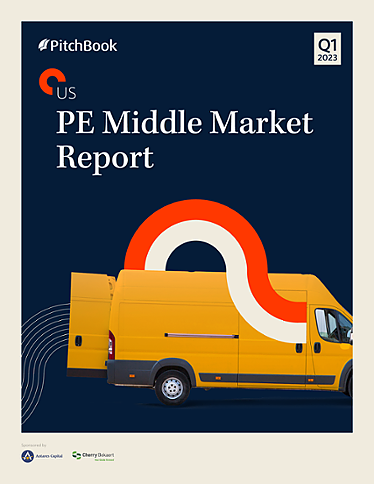UNLOCKING GROWTH
Navigating the Dynamic Realm of Private Equity: A Comprehensive Analysis
We take a glimpse into the findings of Pitchbook’s Q1 2023 US PE report, highlighting unprecedented investment activity, sector preferences, geographic shifts, operational value creation, evolving exit strategies, and the growing significance of environmental, social, and governance (ESG) considerations.
US PE Middle Market Report
A comprehensive Q1 analysis conducted by Pitchbook sheds light on the evolving landscape and key trends within the US Middle-Makret Private Equity market. Here we will briefly delve into the findings of the report, offering insights into the record-breaking investment activity, sector preferences, shifting geographies, and emerging strategies within the private equity space.
Unprecedented Investment Activity:
The Pitchbook report reveals an unprecedented surge in private equity investment activity, with global funding reaching remarkable levels. In 2022 alone, private equity firms deployed over $500 billion across various industries, surpassing previous records. This surge highlights the increasing attractiveness of private equity as an asset class and underscores the confidence of investors in the potential returns offered by privately held companies.
Sector Preferences: Expanding Horizons:
While traditionally associated with buyouts and restructuring, private equity has diversified its sector preferences, expanding beyond traditional industries. The Pitchbook report showcases a growing interest in sectors such as technology, healthcare, and consumer goods. This shift aligns with the broader trend of seeking growth and disruptive potential in industries ripe for innovation and transformation.
Geographic Shifts: The Rise of Emerging Markets:
The Pitchbook analysis reveals a significant shift in private equity investments toward emerging markets, showcasing a diversification away from traditional investment destinations. Countries in Asia, particularly China and India, have witnessed a surge in private equity activity, reflecting the expanding pool of attractive investment opportunities and the growth potential offered by emerging economies.
Focus on Operational Value Creation:
Private equity firms are increasingly prioritizing operational value creation as a means to drive growth and enhance returns. The Pitchbook report underscores the rising emphasis on implementing strategic initiatives, operational efficiencies, and effective management practices within portfolio companies. This shift in focus aims to unlock the true potential of investments and drive sustainable long-term value.
Evolving Exit Strategies:
Pitchbook’s analysis highlights the evolving landscape of exit strategies within private equity. While traditional routes like initial public offerings (IPOs) remain prominent, alternative exit methods such as secondary sales and recapitalizations are gaining traction. Additionally, the report indicates a rising interest in holding investments for longer periods, reflecting a patient and strategic approach to maximizing returns.
ESG Considerations:
Environmental, Social, and Governance (ESG) factors are increasingly becoming integral to private equity investments. The Pitchbook report showcases a growing emphasis on responsible investing, with private equity firms incorporating ESG considerations into their investment decision-making processes. This aligns with the broader global trend of pursuing sustainable and socially responsible business practices.
A Moment Of Recognition
The US private equity middle market is currently basking in its well-deserved moment of recognition. With middle-market funds consistently outperforming their megafund counterparts and securing a significant share of all PE buyouts, the middle market has emerged as a formidable force within the industry.
While dealmaking in the middle market experienced a drop from its peak, it remains resilient, surpassing pre-pandemic activity levels. The evolving dynamics of the market, including limited access to debt packages for large leveraged buyouts and a shift in public-to-private deals toward the middle market, have spurred middle-market funds to seek opportunities that align with their financing capabilities and return objectives.
Although middle-market exit activity slowed in the first quarter of 2023, fundraising for US middle-market PE showcased surprising strength. Investors, fatigued by big-fund dominance, have shown increased interest in smaller buyout funds that target smaller companies. This trend not only allows investors to maintain exposure to the strategy without straining PE allocations but also offers specialization opportunities that can boost returns in a challenging buyout environment.
Looking To The Future
Looking ahead, the middle market is on track for its best fundraising year since 2019, with its share of all US buyout funds reaching its highest level in more than a decade. While unforeseen shifts in interest rates and public markets could potentially alter the landscape, the current conditions undeniably favor the middle market’s continued success.
The US private equity middle market has undoubtedly arrived, presenting both challenges and opportunities for investors and market participants. As the middle market continues to thrive, stakeholders must stay attuned to evolving trends, adapt to changing dynamics, and capitalize on the unique advantages offered by this flourishing segment of the private equity landscape.

